In modern football, using more players in deep positions has become a fundamental tactic for teams that prioritize possession and control. This strategy involves starting attacks from the defensive third, progressing forward through accurate passing and movement without the ball while maintaining a compact and balanced team shape. A core point to this approach is the use of two defensive midfielders, whose roles have evolved significantly over the years.
Specifically, the use of two players, commonly referred to as the “double pivot,” or double number 6, has become increasingly dominant among top teams. This system offers both tactical flexibility and defensive solidity, making it a preferred choice for many managers aiming to dominate possession and control the flow of the game.
Disclosure: Please note that some of the links below area affiliate links and at no additional cost to you I will earn a commission. Know that i only recommend products services and brands i have personally used and stand behind. When you use one of my affiliate links, the company compensates me, which helps me run this blog and keep my in -depth content free of change for readers (like you). Read our disclosure for more info.
Table of Contents
The Evolution of Football Tactics: The Rise of the 2 Pivot System
Historically, football tactics were dominated by the use of a single pivot defensive midfielder, particularly in formations like the 4-3-3 or 4-1-4-1. The single pivot, responsible for shielding the defense and distributing the ball, was often the focal point of a team’s defensive structure. However, as football evolved and pressing became more aggressive, the limitations of the single pivot system became obvious. Teams began to seek greater balance and defensive coverage, leading to the development of the double pivot system.
The rise of the double pivot can be attributed to the need for more stability and flexibility in the midfield. Managers who have coached in the Premier League, Serie A and La Liga, like Pep Guardiola, Roberto De Zerbi, Jose Mourinho with Manchester United, and Diego Simeone have been instrumental in popularizing this approach. Guardiola, during his time at Bayern Munich and Manchester City, frequently employed a double pivot to maintain control in the midfield and dictate the tempo of the game. Guardiola may not use two midfielders in deep areas as a starting position, but during the game and when is needed, players may drop back to help with the ball circulation when is needed.
Mourinho, known for his pragmatic approach, utilized the double pivot to solidify his defensive structure, especially during his successful tenure at Chelsea. Jose managed to win the Champions League and to reach another two European Championship finals winning one by utilizing the best benefits from this system. Simeone’s Atlético Madrid is another example where the double pivot plays a crucial role in both defensive organization and quick transitions to attack.
Top-class players who can play the specific role and dominate the central midfield area could be Luka Modric, Kevin De Bruyne – even though he operates better as an attacking midfielder, Toni Kroos, Bernardo Silva,De Jong when was playing for Ajax, Ilkay Gundogan and Jude Bellingham.
30 Possession, Positional and Small Sided Games
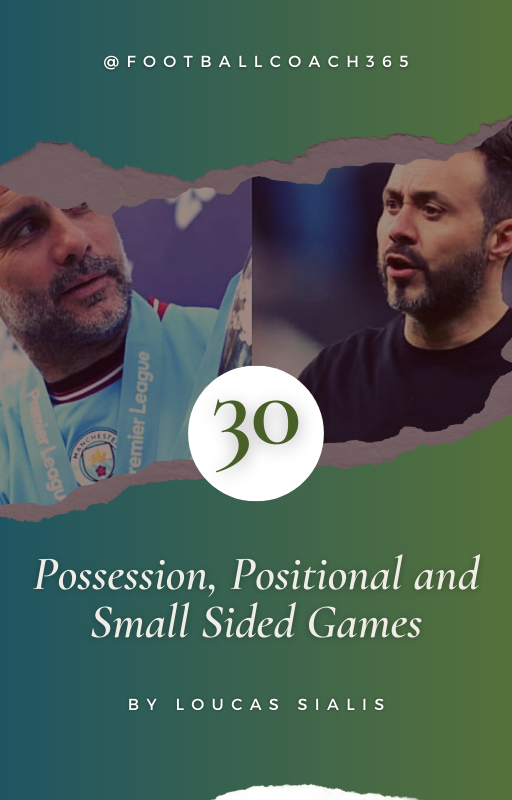
Dive into the world of tactical mastery and player development with an expansive collection
- High Tempo Football
- Players develop their technical skills and tactical understanding
- Players cultivate essential life skills such as communication, leadership, and resilience.
- They learn to adapt to varying game situations
- Think critically under pressure, and collaborate effectively with teammates
- Forging bonds that extend beyond the final whistle.
Understanding the 2 Midfielders System
In the 2 pivot system, two defensive midfielders operate side by side, providing a solid foundation for both defense and attack. This system is typically deployed in formations such as 4-2-3-1, 4-4-2, 3-4-3, or variations thereof. The two pivots are responsible for covering the central areas of the pitch, protecting the backline, and ensuring that the team remains compact. Their positioning is crucial for recycling possession, breaking down opposition attacks, and launching counterattacks.
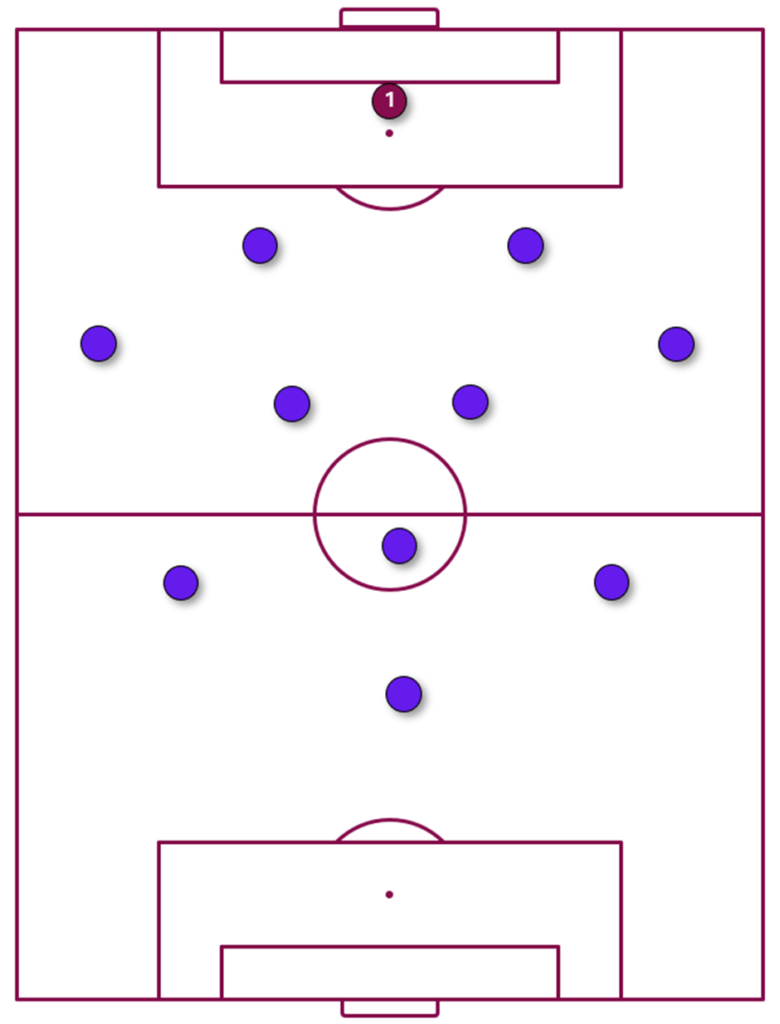
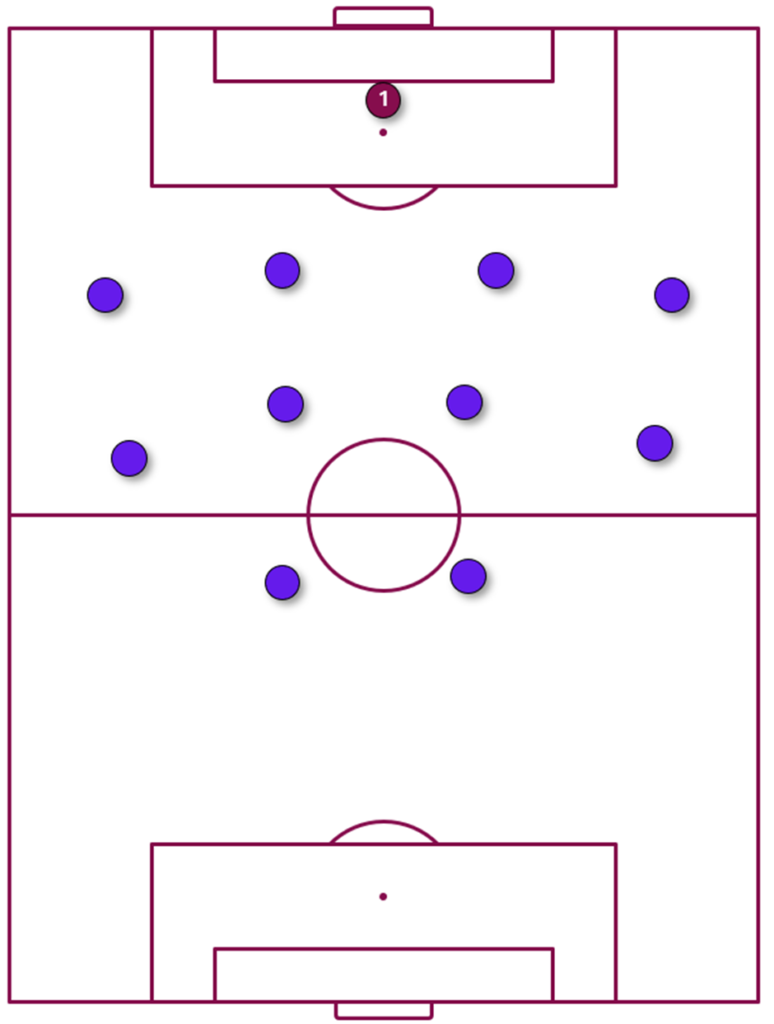
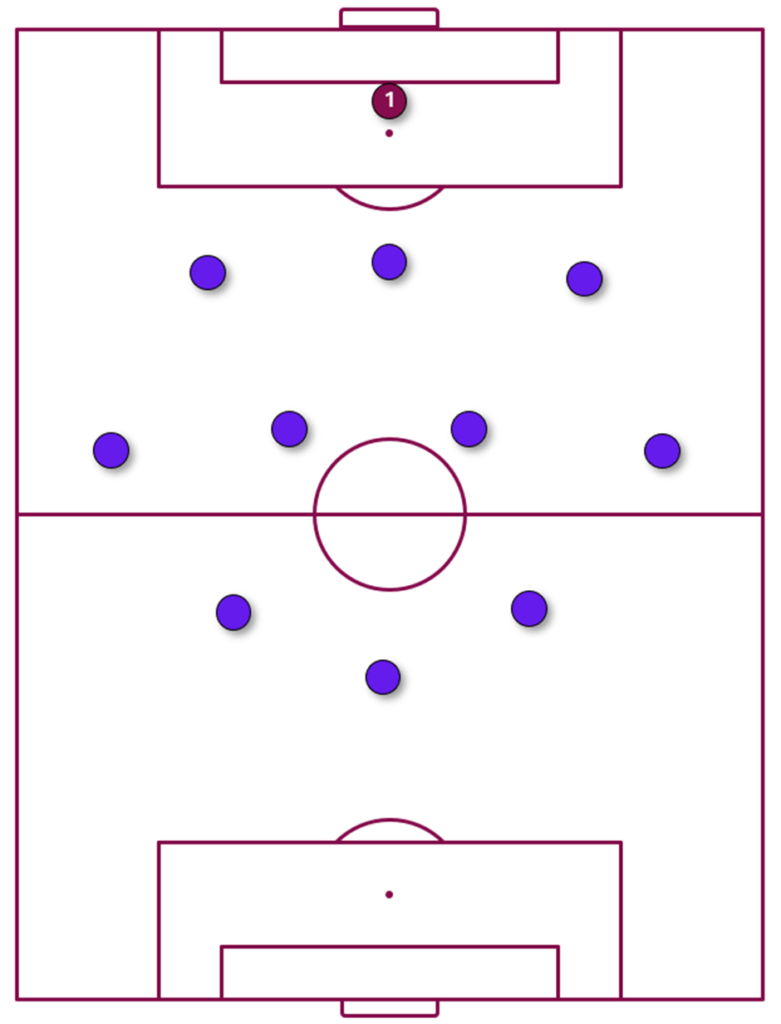
The double pivot system contrasts with the single pivot by distributing defensive and distributive responsibilities between two players rather than one. This shared responsibility reduces the risk of overload in midfield and allows for greater flexibility in how the team transitions from defense to attack. their main role is to offer more balance in the team rather than making assists or creating a goal for an attacker. The system also provides multiple passing lanes, making it easier to play through the opposition’s press.
Building up with a Double Pivot
In my opinion, the most recognizable representative of using a double pivot for attacking purposes is probably Roberto De Zerbi during his time in Brighton.
Brighton use this as a way of attracting pressure to leave space in higher areas and to prevent the opposing first line of pressure to use a cover-shadow marking on their two midfielders. Brighton, used their double-pivot to play around the first line of pressure and clever rotations to break out of their half.
The two midfielders initially positioned themselves close and parallel to each other. However, as the ball was played towards the center back, their positioning changed. One of the two pivots moved behind the attacker, making it difficult to track his position.
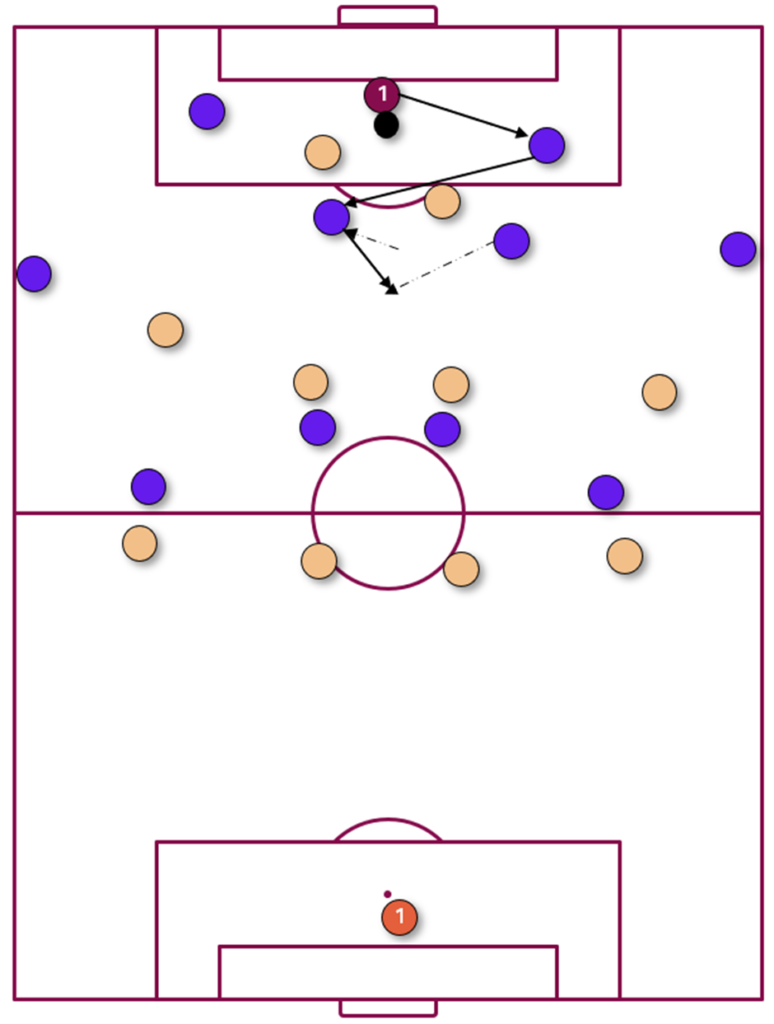
Above is an example of build with a double pivot with De Zerbi using the weak side midfielder offering support in a diagonal position, while the other midfielder is moving behind the opposing striker to provide support at a different height.
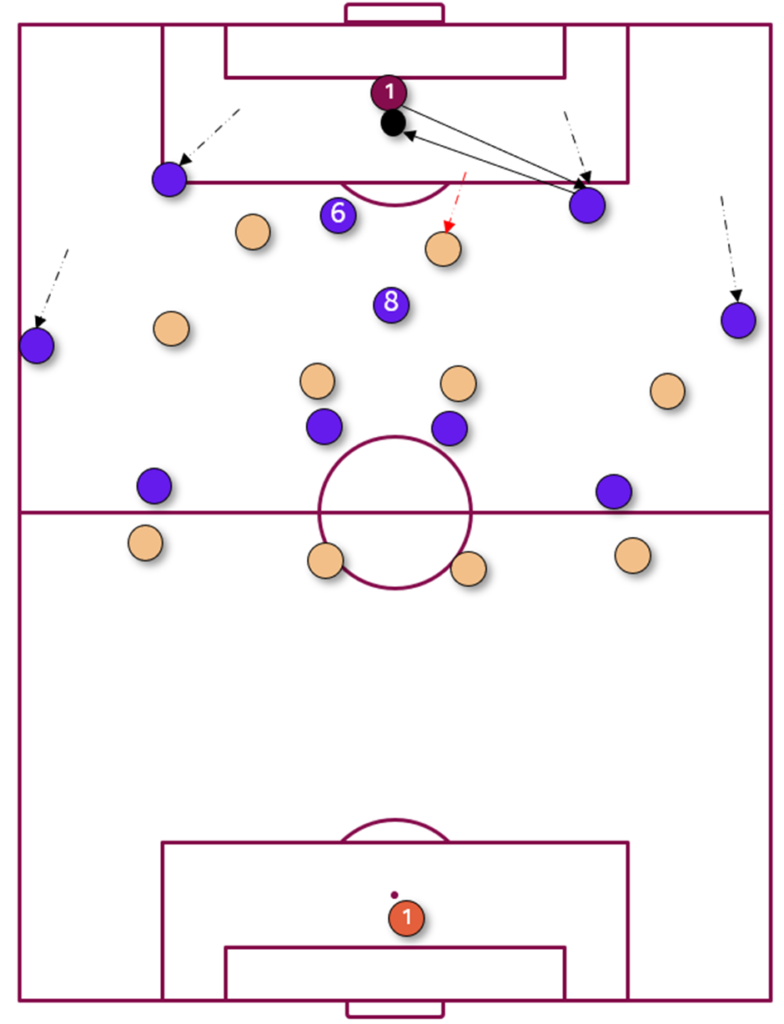
If there is no pass forward, Brighton’s players showed patience by passing back and alternate their structure as to have more passing options available.
By using a double pivot, teams can create great opportunities for positional rotations in the wide areas without sacrificing balance in the center of the field. This allows the full backs to advance into more attacking positions and helps create overloads in the central areas with the wingers positioning themselves in the half spaces.
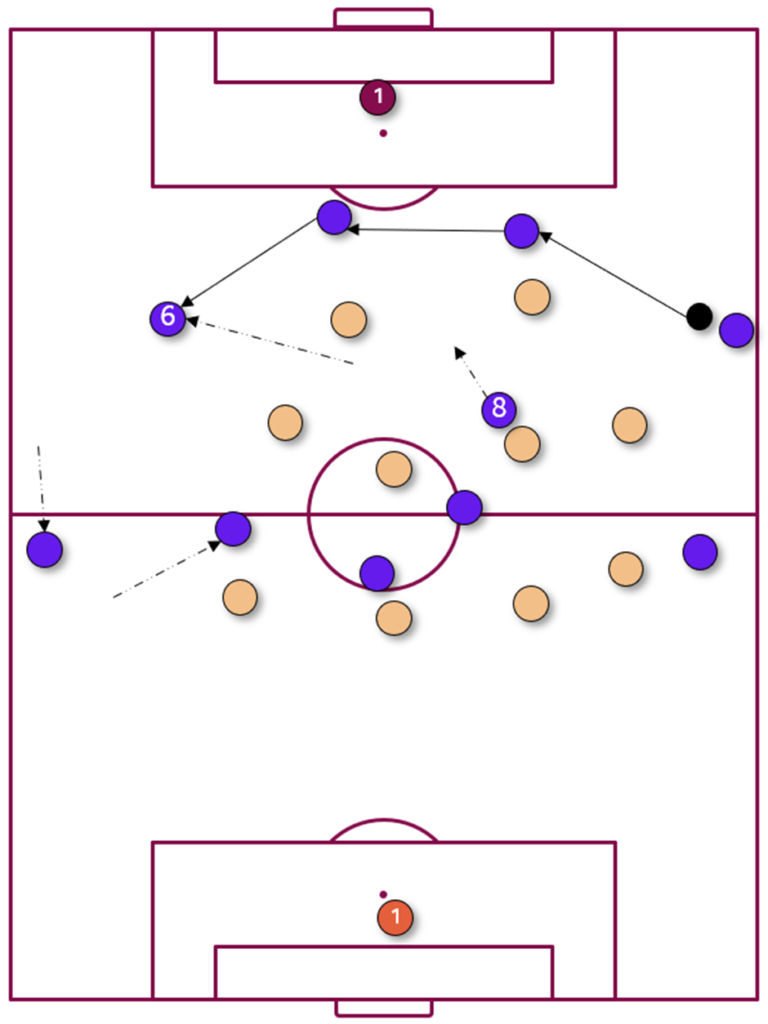
These movements have several benefits in the build-up phase. It provides an option in the wide areas without making it easy for opponents to press, and if opponents try to press the pivot who moves to the side, other passing options open up in the central areas that can break the opposition’s defensive lines vertically.
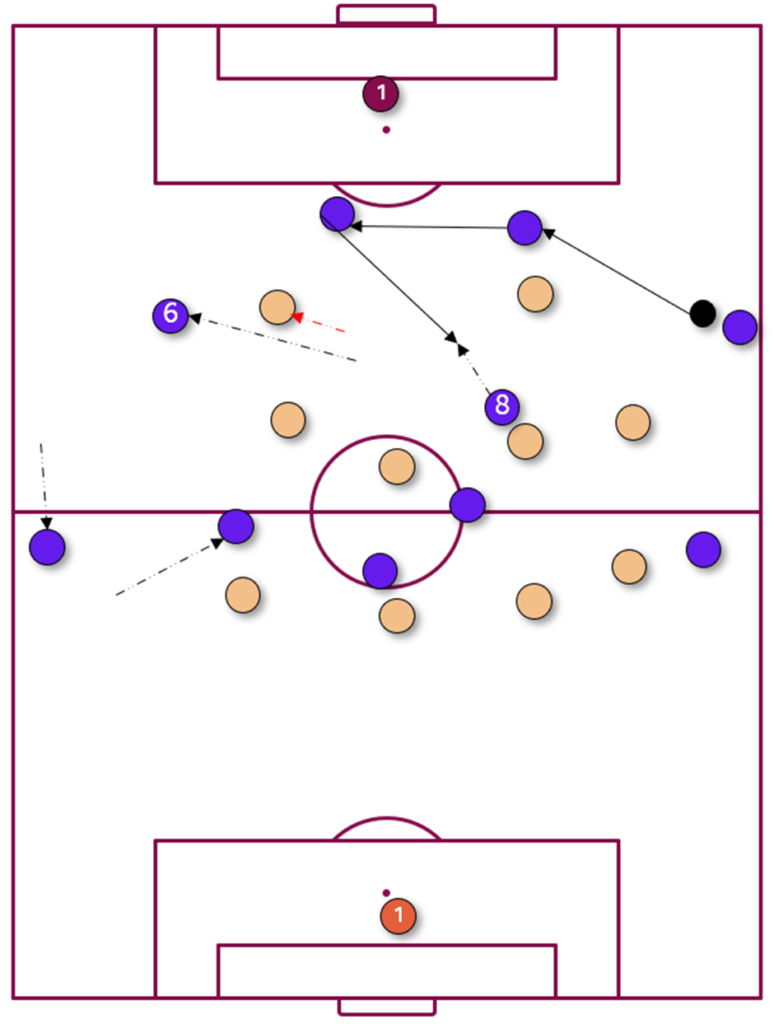
If the option to the dropping to the side centre midfielder is blocked, the center backs may need to open up a little as to create different passing options for a vertical pass.
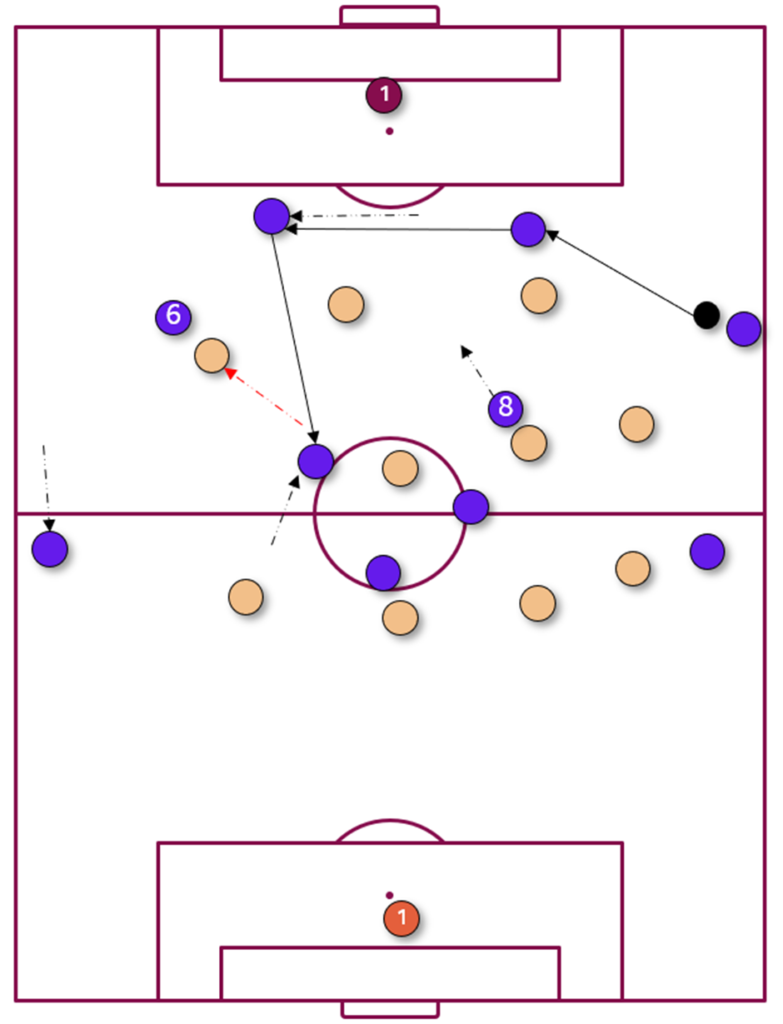
Another excellent example of the importance of using a double pivot is Xavi Alonso and his outstanding Bayer Leverkusen team. Xavi Alonso’s idea was to use the two midfielders operating at different heights and depth and with the help of the more advance players to utilize as much as possible the Third Man concept. Usually one of the midfielders was offering a near and clear support and the other kept a suitable position to receive a bounce back ball.
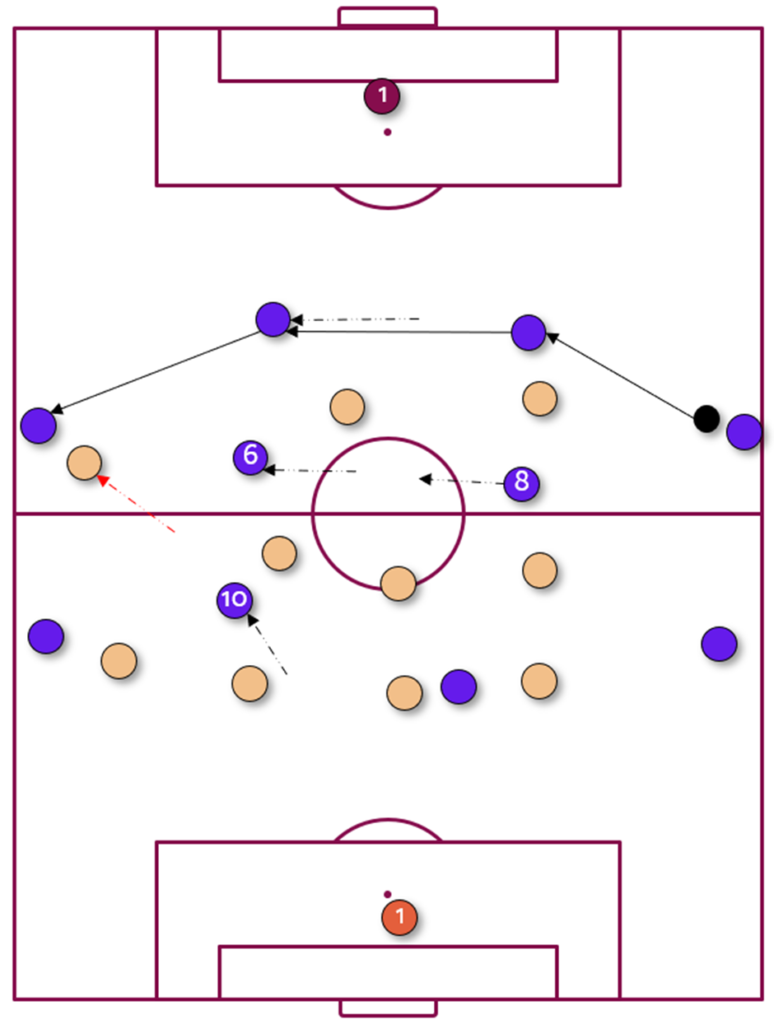
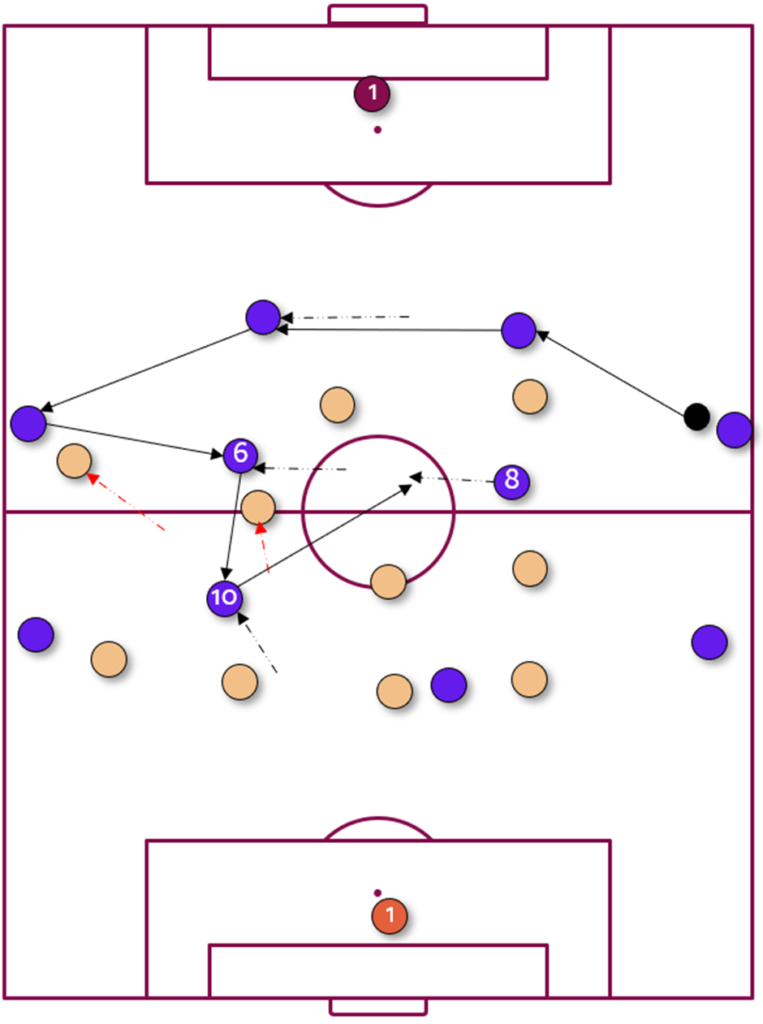
Advantages of Using 2 Pivot Defensive Midfielders
The double pivot system offers several key advantages that make it appealing to managers looking to build up from the back:
- Stability and Balance: The presence of two defensive midfielders provides a more balanced shape, both defensively and offensively. This ensures that the team is less vulnerable to quick transitions and counterattacks, as there is always an additional player to cover space.
- Defensive Coverage: With two midfielders covering the central areas, teams can more effectively block passing lanes and limit the opposition’s ability to exploit spaces between the lines. This is particularly useful against teams that rely on quick, direct play.
- Ball Distribution and Control: The double pivot allows for a wider range of passing options, making it easier to circulate the ball and build from the back. This also helps in bypassing the opposition’s press, as the two pivots can create passing triangles with the center-backs and full-backs.
- Flexibility in Transitions: The 2 pivot system allows for quick transitions from defense to attack and vice versa. Depending on the situation, one of the pivots can advance into the final third while the other stays back to maintain the team’s defensive shape. In case of losing the ball, there are always one or two players behind the ball to protect the back line.
- Positional Versatility: The system offers flexibility in terms of player roles and positioning. The two pivots can adapt their positioning based on the flow of the game, providing either a double screen in front of the defense or an extra option in attack.
Disadvantages of Using 2 Pivot Defensive Midfielders
Despite its numerous advantages, the double pivot system also has certain drawbacks:
- Susceptibility to High Press: Teams that employ a high press can force mistakes if the double pivot is not technically proficient or lacks composure under pressure. The close proximity of the two pivots can sometimes make it easier for opponents to press them simultaneously.
- Limited Attacking Creativity: With two midfielders focused on defensive duties, the system can sometimes lack creativity and forward strength, especially if the attacking midfielders are marked out of the game. This can lead to a slow build-up and difficulty breaking down well-organized defenses.
- Over-Reliance on Defensive Midfielders: The system places significant responsibility on the two pivots, both in defense and in initiating attacks. If either player is out of form or injured, the team’s overall structure can suffer, leading to imbalances.
- Vulnerability to Wide Play: If the full-backs push too high up the pitch, the double pivot may struggle to cover the wide areas, leaving the team exposed to counterattacks down the flanks.
MARCELO BIELSA – ATTACKING TACTICS AND SESSIONS

Learn from one of the most respected and admired coaches in modern football
- Exciting and Expansive Attacking Tactics
- High Tempo Football
- Constant Off the Ball Movements
- Moving the Ball to the Free Player via Link Players
- Creating Numerical Advantages in Key Areas of the Pitch
- Quick Combination Play
- Constant Pursuit to Exploit Potential Gaps and Spaces
Key Attributes of Top Level Defensive Midfielders
For the double pivot system to function optimally, the two midfielders must possess specific attributes:
- Technical Proficiency: Both players must be comfortable on the ball, capable of executing accurate short and long passes under pressure.
- Tactical Intelligence: Understanding when to press, when to hold, and how to position themselves is critical for disrupting the opposition’s play and maintaining team shape.
- Positional Awareness: The pivots must be aware of their surroundings, able to read the game and anticipate opposition movements to intercept passes or block shots and where to move to offer clear support for passing option.
- Physical Attributes: Stamina, strength, and agility are essential for covering large areas of the pitch and competing in duels.
- Leadership and Communication: One or both pivots should be vocal, organizing the team’s shape and ensuring that the defensive line and midfield are synchronized.
Positional Play in the Build-Up Phase
In the build-up phase, especially for teams who utilize Positional Play, the two pivots play a crucial role in maintaining possession and progressing the ball up the pitch. Their positioning is key to creating passing lanes and ensuring that the team can play out from the back without resorting to long balls.
- Creating Triangles: The double pivot often drops deep to form triangles and rhombus with the center-backs and full-backs. This facilitates quick ball circulation and helps to bypass the first line of the opposition’s press.
- Dropping Between Center-Backs: In certain scenarios, one of the pivots may drop between the center-backs to create a back three, providing additional defensive security and allowing the full-backs to push higher up the pitch.
- Advanced Positioning in the Final Third: Depending on the team’s tactical approach, one of the pivots may push forward into the final third, supporting the attack and creating overloads in key areas.
Training the Double pivot
Positional Game 4 v 4 + 6 neutrals
Description:
It’s a 4 v 4 game with 6 neutral players. The goal is to move the ball from one side to the other by passing it only among the inside attackers. In each side area, there should be a 2 v 2 situation with 4 neutral players. The team in possession should try to keep the ball, find the inside players, and pass the ball to the other side.
Rules:
- Move from side to side to score one goal
- One of the attackers from the other side can drop into the middle zone and act as a #10. This player can receive, turn, and make plays using only two touches or execute a back pass to utilize the Third Man concept. To start, allow the #10 player not to be pressed.
- If the defenders regain possession, they need to pass to an outside neutral player and then transition to the role of attackers.
- Progression: As the players become familiar with the game, allow one defender to drop inside the zone and press the #10


Positional Game 6 v 6 + 4 neutrals
Description:
In this 6 v 6 game, there are 4 neutral players. The objective is to move the ball from one side to the other by passing. Each side’s area should have either a 3 v 3 or 4 v 3 setup, with 2 neutral players. The team in possession needs to focus on retaining control of the ball, finding the inside players, and passing the ball to the opposite side.
Rules:
- Move from side to side to score one goal
- Defenders always 3 in each sub-zone
- Central attackers can move free between the sub-zones
- They can also pass to the attackers on the other side.
- The only prohibited pass is between the wide attackers on the same outside line.
- If the defenders regain possession, they need to pass to an outside neutral player and then transition to the role of attackers.

Conclusion
In conclusion, the double pivot system in football has revolutionized the way teams build up from the back, offering a blend of defensive security and tactical versatility. This approach has been embraced by visionary managers and has proven effective against the high-pressing strategies of modern football. By deploying two defensive midfielders, teams gain a strategic advantage, allowing for fluid ball movement and a more robust defensive posture.
As the game continues to evolve, the double pivot system stands as a testament to the innovative spirit of football, reflecting a deeper understanding of the sport’s dynamics and the continuous search for competitive edge. The legacy of the double pivot is not only in its current tactical efficacy but also in its influence on the future development of football tactics worldwide.

